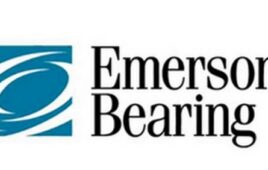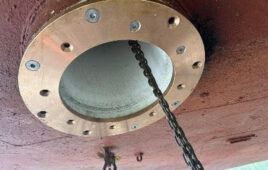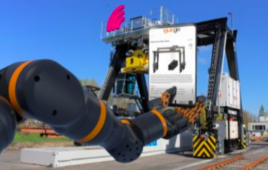By Mike Santora
Timken and Robbins are collaborating on the tunnel boring machine set to carve a path for the Ohio Canal Interceptor Tunnel in Akron, OH. In this second and final installment of story, the project’s principle engineers give us an in-depth look into a list of specific challenges The Timken bearings will face in this application.
Lubrication
 Most of the time, the engineering team is running grease in the cutters of the TBM. “There seems to be better lubrication with grease, it’s a little more tolerant of seal failure,” said Robbins’ Chief Engineer Dennis Ofiara.
Most of the time, the engineering team is running grease in the cutters of the TBM. “There seems to be better lubrication with grease, it’s a little more tolerant of seal failure,” said Robbins’ Chief Engineer Dennis Ofiara.
The difficulty they’ve been running into is that when using oil they can simply remove a cutter from the machine, place the cutting disc, and then flush out old oil and put new oil in. That’s not as easily done with grease in a cutter.
So with grinding and cutting through rock and through the ground, is contamination a big problem? It can be, said Ofiara.
“I don’t remember the pie chart now but there’s probably, depending on the conditions, 15 or 20% cutter failure due to seal failure. Sometimes its hard to diagnose what came first: a bearing failure and then a failed seal, or vice-versa. You don’t know. That’s a rough number.”
More that just face time
Both Ofiara and Timken Principal Application Engineer Tim Murphy pointed out that although the cutter face bearings had been the topic of most of our conversation, many bearings work together to make the TBM run. The HH bearings used for the cutter face are just one type of a fairly standard product for Timken. Murphy briefly touched on the scope of the bearing profile in the TBM as a whole.
“There are dozens upon dozens of other bearings. Some of them are tapered roller bearings. We have many wheeled trailers that we pull behind the machine. There’s are many wheel bearings there that are tapered roller bearings. The main bearing in the machine takes the wheel bearing. In the Akron TBM machine it’s what we call a triple axis bearing, with cylindrical rollers. There’s dozens of gear boxes with bearings in them.
Timken does not provide every bearing on a Robbins’ TBM, but it does handle most of the thrust bearings that deal with the most critical functions.
“I would say when there’s a tapered roller bearing on a Robbins’ machine, there’s a pretty good chance it’s a Timken”, said Ofiara.
One of the primary reasons for using tapered roller bearings on the TBM is that they are extremely efficient at accommodating combination loads. In applications like the OCIT project, the load conditions aren’t always consistent. There is a variety of loading depending on the ground. The cutter face bearing for the Robbins’ TBM are optimized for the typical cutter loads like a large radial load, overturning moment load and some thrust load on the bearing from the cutter rotating in a circular path.
Additionally, with a tapered roller bearing there are three contact patches, where as with other types of bearings, spherical, cylindrical, you have two contact patches. With a tapered roller bearing you have a contact patch at the roller on the outer ring, the roller on the inner ring and the roller on the large rib. Just the geometric configuration of that large rib is what supplies the stiffness that allows it to support the overturning moment. That’s why for the cutter bearing a tapered option is ideal for that position.
Drainage
Frequently, tunnel projects have to contend with water interfering with the dig. Ofiara isn’t anticipating this to be much of a problem in Akron though.
“We won’t have water coming in when we will be operating in closed mode. From the geological prediction, they have a pretty good idea, where they’ll encounter water. We’ll operate closed mode there. Again, it’s like a submarine, so we won’t have to deal with water. When they operate in open mode, they’re obligated to drive a reconnaissance hole, a probed hole, first and if drainage from the probed hole reaches a certain threshold, perhaps 15 gallon a minute or so, then they have to drill more holes and inject grout into the ground if they want to continue in open mode.”
Robbins
www.therobbinscompany.com
Timken
www.timken.com
The post Part 2: Timken and Robbins team up for the OCIT project appeared first on Bearing Tips.
Filed Under: Bearing Tips




